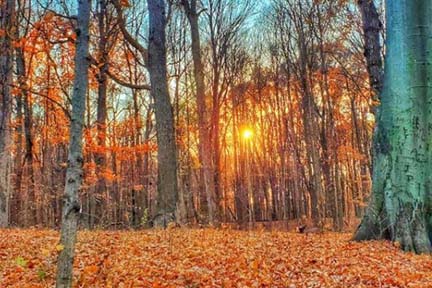Sept. 21, 2021
Share your thoughts with the DNR at upcoming meetings
Variety of public meetings from late September through late October offer opportunities for public feedback, involvement
The Department of Natural Resources is committed to providing Michigan residents the opportunity to share input and ideas on policy decisions, programs and other aspects of natural resource management and outdoor recreation opportunities.
One important avenue for this input is at meetings of the public bodies that advise the DNR and, in some cases, also set policies for natural resource management. Frequently check the DNR boards, commissions, committees and councils webpage for updates.
The links below will take you to the webpage for each group, where you will find meeting details such as location and agenda (when finalized). Please check these pages frequently, as meeting details may change and sometimes meetings are canceled.
October meetings
- Belle Isle Park Advisory Committee – Thursday, Oct. 21, 9 a.m. (Contact: Barbara Graves, 517-284-6135).
- Eastern Upper Peninsula Citizens Advisory Council – Tuesday, Oct. 19, 6 p.m. EDT (Contact: Stacy Welling Haughey, 906-226-1331).
- Forest Management Advisory Committee – Wednesday, Oct. 13, 1 p.m. (Contact: Kimberley Korbecki, 517-284-5876).
- Michigan Board of Foresters – Wednesday, Oct. 6, 10 a.m. (Contact: Brenda Haskill, 989-370-9557).
- Michigan Freedom Trail Commission – Friday, Oct. 8, 11 a.m. (Contact: Sheri Giffin, 517-335-2591).
- Michigan Natural Resources Commission – Thursday, Oct. 14, 9 a.m. (Contact: Su Schrauger , 517-284-6237).
- Michigan Natural Resources Trust Fund Board – Wednesday, Oct. 20, 9 a.m. (Contact: Jon Mayes, 517-284-5954).
- Michigan State Parks Advisory Committee – Wednesday, Oct. 13, 2 p.m. (Contact: Barbara Graves, 517-284-6135).
- Michigan State Waterways Commission – Thursday, Oct. 7, 9 a.m. (Contact: Michelle Wieber, 517-285-0747).
- Michigan Wildlife Council – Friday, Oct. 22, 10 a.m. (Contact: Pam Vance, 517-284-6056).
- Nonmotorized Advisory Workgroup – Thursday, Oct. 21, 10 a.m. (Annalisa Centofanti, 517-331-6219).
- Northern Inland Lakes Citizens Fishery Advisory Committee – Thursday, Oct. 14, 11 a.m. (Contact: Tim Cwalinski, 231-340-0276).
- Off-road Vehicle Advisory Committee – Wednesday, Oct. 27, 5 p.m. (Contact: Jessica Holley, 517-331-3790).
- Pigeon River Country Advisory Council – Thursday, Oct. 21, 5 p.m. (Contact: Mark Monroe, 989-370-9827).
- State Historical Records Advisory Board – Thursday, Oct. 7, 10 a.m. (Contact: Mark Harvey, 517-449-5885).
- Timber and Forest Products Advisory Council – Friday, Oct. 22, 8:30 a.m. (Contact: Kimberley Korbecki, 517-284-5876).
- Urban and Community Forestry Council – Tuesday, Oct. 26, 10 a.m. (Contact: Kevin Sayers, 517-582-3209).
- Wolf Management Advisory Council – Monday, Oct. 11, 9 a.m. (Contact: Victoria Lischalk, 517-599-1067).
State land reviews
In addition to its regular meetings, the DNR will host state land review meetings in late September. These meetings focus on the DNR’s state land review process and how the department makes decisions about which parcels best meet its mission to provide public access to quality outdoor recreation opportunities. DNR land managers will discuss recommendations for the third group of 10 counties under state land review: Alcona, Calhoun, Emmet, Houghton, Keweenaw, Mackinac, Macomb, Mason, Oceana and St. Clair.
Participate in either meeting by following the given Microsoft Teams link. You don’t have to have Microsoft Teams on your computer or smart device to join, but please note that each link is specific to its meeting date and time, and the links will not be live or accessible until each meeting is “opened” by the moderator. Anyone without access to a computer may call in using the phone number provided.
- Wednesday, Sept. 29, 6 p.m. – Join Microsoft Teams meeting or call (for audio only) +1 248-509-0316, 733999401#; Conference ID: 733 999 401#
- Thursday, Sept. 30, 2:30 p.m. – Join Microsoft Teams meeting or call (for audio only) +1 248-509-0316, 645581658#; Conference ID: 645 581 658#
Contact Jessica Mistak, 906-280-8876, for more information.
Upcoming opportunity to serve
The Equine Trails Subcommittee is seeking active equestrians who have an interest in serving on this subcommittee as a statewide tourism equine industry representative. This person, who will serve a four-year term, will identify and promote partnerships and pack and saddle recreation opportunities and collaborate with trail-riding communities. Please complete the online application by Nov 15.
|









 Want to see more pictures like this, taken by Michigan state parks photo ambassador
Want to see more pictures like this, taken by Michigan state parks photo ambassador  Established in 1972, National Hunting and Fishing Day celebrates and recognizes hunters and anglers for their immense contributions to fish and wildlife conservation and to our society.
Established in 1972, National Hunting and Fishing Day celebrates and recognizes hunters and anglers for their immense contributions to fish and wildlife conservation and to our society.
 Gov. Gretchen Whitmer issued a proclamation to mark Sept. 25 as Hunting and Fishing Day in Michigan to recognize their importance and to bring awareness to conservation efforts driven by hunters and anglers.
Gov. Gretchen Whitmer issued a proclamation to mark Sept. 25 as Hunting and Fishing Day in Michigan to recognize their importance and to bring awareness to conservation efforts driven by hunters and anglers.
 Following a tree giveaway event last week at the Outdoor Adventure Center in downtown Detroit, 150 new trees are making their way into neighborhoods by car and bike, on foot and even by boat. In partnership with the DNR, The Greening of Detroit and the Detroit Pistons planned and organized the event.
Following a tree giveaway event last week at the Outdoor Adventure Center in downtown Detroit, 150 new trees are making their way into neighborhoods by car and bike, on foot and even by boat. In partnership with the DNR, The Greening of Detroit and the Detroit Pistons planned and organized the event.
 Michigan Trails Week is upon us, and so is the Michigan Trails Week Challenge! Whether you’re into hiking, biking, horseback riding, snowmobiling, off-roading or paddling, this is the week to get out on your favorite trail or explore someplace new.
Michigan Trails Week is upon us, and so is the Michigan Trails Week Challenge! Whether you’re into hiking, biking, horseback riding, snowmobiling, off-roading or paddling, this is the week to get out on your favorite trail or explore someplace new.
 Peak fall colors are on the way, which means Michigan’s nearly 20 million acres of forest land are ready to put on their annual show, enticing visitors and residents on road trips around the state.
Peak fall colors are on the way, which means Michigan’s nearly 20 million acres of forest land are ready to put on their annual show, enticing visitors and residents on road trips around the state.
 Every year, on the fourth Saturday in September, we celebrate National Public Lands Day – the country’s largest, single-day volunteer effort centered around public lands. It’s a great opportunity for people to devote a day to caring for public green and wild spaces, including parks, trails, hunting lands and forests.
Every year, on the fourth Saturday in September, we celebrate National Public Lands Day – the country’s largest, single-day volunteer effort centered around public lands. It’s a great opportunity for people to devote a day to caring for public green and wild spaces, including parks, trails, hunting lands and forests.